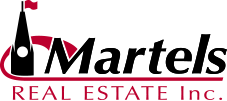Should buyers use the Home Buyer’s Plan?
Tuesday, March 3, 2020
Should buyers use the Home Buyer’s Plan?
By Penelope Graham, Feb 24, 2020
In today’s hot housing market, prospective buyers often need as much help as they can get – and the Home Buyers’ Plan (HBP) is one of the original tools offered up by the federal government to ease the journey into homeownership. First introduced in 1992, it’s designed to allow first-time buyers to pull saved funds from their RRSP to put toward a home purchase down payment, without experiencing any tax consequences.
But is using the HBP a truly effective method for sourcing down payment funds, especially in Canada’s most expensive real estate markets? Let’s take a look.
Theoretically, a buyer can pull up to $35,000 from their RRSP (and up to $70,000 between two partners, assuming both qualify as first-time buyers). Buyers must have a signed Agreement of Purchase and Sale on hand for a resale home or a new build, intend to dwell within the home as a principal residence within a year of its purchase or completion and have sheltered the funds within an RRSP for a minimum of 90 days.
However, using the HBP to its maximum potential assumes the funds have been saved in the first place – an accomplishment that isn’t as likely among the first-time home buyer segment, according to data from Statistics Canada. The agency reports that while 35 per cent of all Canadians use RRSPs, they’re most utilized (50.8 per cent) by households with a major income earner bringing in between $80,000 – $99,999, and between the ages of 35 – 54.
Those earning less are much more likely to use a Tax-Free Savings Account (TFSA) to set aside home down payment funds. It has been lauded for its flexibility. Unlike the HBP, which requires buyers to pay back their RRSP funds in installments over a 15-year period or be taxed in full, there’s no obligation to replenish funds from a TFSA.
Then, there’s the question of just how far $35,000 would go in the nation’s priciest markets of Toronto and Vancouver, where average home prices sit above the $900,000 mark. According to calculations from Zoocasa, a Vancouver buyer with the maximum HBP amount saved would see that cash go towards just 3.5 per cent of the purchase of a benchmark home, while it would account for 4.3 per cent of a home in Toronto. In both instances, that’s less than the required five- to 7.5-per-cent down payment.
Those HBP funds will go considerably farther in the Prairies, accounting for 13.5 per cent of a home purchase price in Regina, 12.2 per cent in Saskatoon and 11.7 per cent in Winnipeg.
How long would it take to save $35,000 in the HBP? The savings timeline required to actually build up that down payment nest egg also heavily depends on where buyers live. To determine the savings timeline in 14 regions across the nation, Zoocasa analyzed individual income thresholds based on 2017 tax filings and assumed savers were contributing the maximum to their RRSP annually (18 per cent of earned income, to a max of $26,500). The study also compared how long it would take for those in the top 50 per cent, 25 per cent and 10 per cent income groups to save $35,000 and found that, overall, it would take a median-income household between 4.3 and six years to acquire $35,000 in their HBP.
Check out the infographic below to see how long it would take to amass the needed HBP funds across Canada, based on maximum contributions and income:







